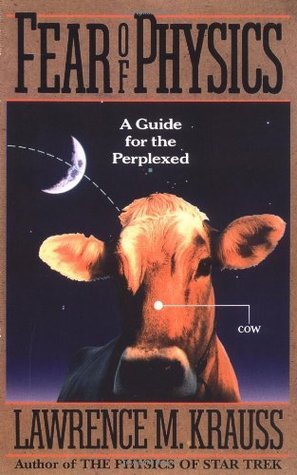
The Physics of Star Trek
Book Description
Warp speed into the cosmos as science meets imagination in "The Physics of Star Trek." From teleportation to time travel, Krauss unveils the astonishing realities behind the beloved series. Explore how black holes warp reality, and whether faster-than-light travel could ever become a reality. With breathtaking clarity, this journey dissects the universe's most tantalizing mysteries through the lens of science fiction. Can we bridge the gap between dreams and reality, or are these cosmic adventures destined to remain purely fictional? The stars beckon—are you ready to discover their secrets?
Quick Book Summary
"The Physics of Star Trek" by Lawrence M. Krauss bridges the world of science fiction and real-world physics, analyzing the plausibility of the technologies and cosmic phenomena featured in the beloved "Star Trek" series. Krauss uses the imaginative concepts from the show—such as warp drive, teleportation, and time travel—as springboards to explore current scientific understanding. The book balances reverence for the ingenuity of science fiction with clear-eyed explanations of what modern physics allows and forbids. Krauss explains complex ideas like relativity, black holes, and quantum mechanics in an accessible style, inviting readers to appreciate both the creativity of "Star Trek" and the wonders of the universe as understood by contemporary science. Ultimately, he demonstrates how reality can both inspire and limit our dreams of the stars.
Summary of Key Ideas
Table of Contents
Possibilities and Limits of Faster-Than-Light Travel
Lawrence Krauss begins by examining the core fantasy of "Star Trek": faster-than-light travel via warp drive. He discusses Einstein’s theory of relativity, which posits the speed of light as an unbreakable limit, and explores how the show’s theoretical “warp drive” attempts to sidestep this rule. Krauss explains why manipulating space itself, as imagined by warp drive, is theoretically fascinating but impossibly energy-intensive according to our current physics, highlighting how scientific laws act both as barriers and as creative inspiration.
Teleportation and the Quantum World
Teleportation, as depicted by the "Star Trek" transporter, provides Krauss with an opportunity to explain the principles of quantum mechanics. He delves into the idea of recording and reconstructing matter at the atomic level, addressing the vast data requirements and energy constraints. While quantum teleportation exists in a rudimentary form with particles, Krauss outlines the insurmountable challenges with living beings—such as identity, complexity, and the nature of consciousness—making human teleportation far beyond our technological reach for the foreseeable future.
Black Holes, Wormholes, and the Fabric of Space-Time
Krauss next considers the manipulation of space and time, focusing on black holes and wormholes. He clarifies what black holes are, how they might be used for dramatic escapes or as power sources, and the mechanics of wormholes as shortcuts through space-time. He separates scientific speculation from science fiction convenience, showing how these phenomena are both objects of serious research and staples of narrative drama. Krauss highlights the ways in which "Star Trek" sometimes aligns with, and at other times departs from, genuine astrophysics.
Time Travel and Its Paradoxes
Time travel, a recurring theme in "Star Trek," allows Krauss to discuss relativity, causality, and paradoxes such as the grandfather paradox. He addresses the mathematical solutions within general relativity that allow for time loops, but also the profound causal and physical challenges these pose. Through the lens of "Star Trek’s" storytelling, Krauss explores whether time travel can ever be more than fiction, concluding that our current scientific understanding keeps it mostly in the domain of thought experiments and narrative exploration.
Science Fiction Inspiring Scientific Progress
Throughout, Krauss celebrates "Star Trek’s" vital role in inspiring scientific curiosity and advancement. He reflects on how science fiction bridges the gap between imagination and technological progress, often sparking real-world innovation and debate. While most "Star Trek" technologies remain out of reach, Krauss encourages readers to appreciate both the intricacies of the universe and the power of creative storytelling. The book ultimately affirms that contemplating far-fetched ideas, even if impossible now, can lead humanity closer to future discoveries.
Download This Summary
Get a free PDF of this summary instantly — no email required.





